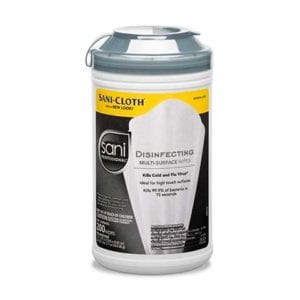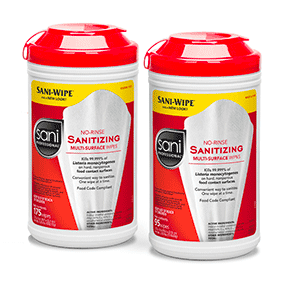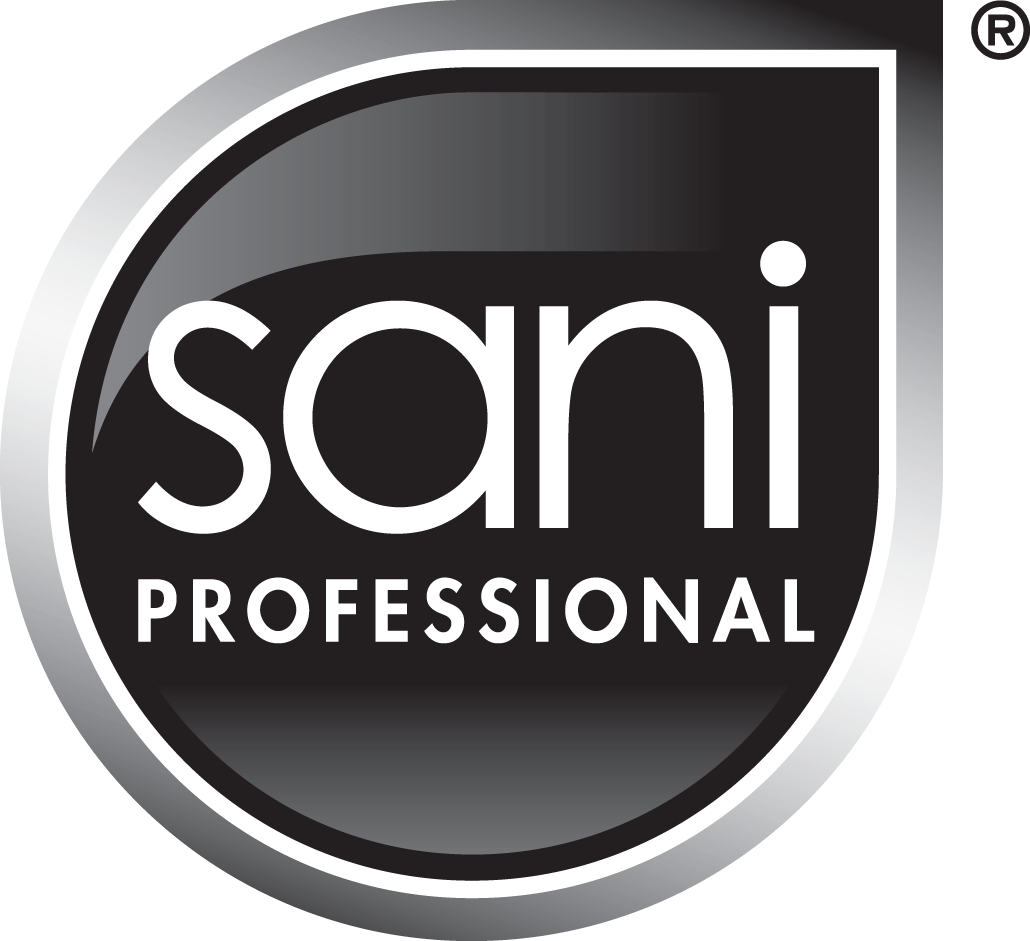COVID-19 » Novel Coronavirus General Information & FAQ
Sani Professional Coronavirus Resources
NEWLY/RECENTLY EMERGED CORONAVIRUS: INTRODUCTION
Sani Professional has been monitoring COVID-19 infections(SARS-CoV-2 virus), previously identified as 2019 Novel Coronavirus (2019-nCoV), to provide you the most current information to help manage the ongoing pandemic.
Per the Centers for Disease Control and Prevention (CDC), the COVID-19 pandemic is now entering a new phase in the United States. There is currently widespread availability of vaccines and testing, advancements in treatments, and increasing immunity levels due to vaccination or previous infection.
NEWLY EMERGED CORONAVIRUS: GENERAL INFORMATION
1. WHAT IS SARS-Cov-2 and Coronavirus?
The SARS-CoV-2 virus is a newly emerged coronavirus that had not been identified prior to 2019. The virus causing coronavirus disease (COVID-19) is not the same strain as the common human coronaviruses that commonly circulate among humans and cause respiratory tract illnesses, with symptoms similar to the common cold.
Viruses, in general, tend to be transmitted from person to person and from commonly or frequently touched surfaces, especially in public environments.
2. WHAT ARE THE SYMPTOMS AND COMPLICATIONS THAT COVID-19 CAN CAUSE?
People with COVID-19 experience a wide range of symptoms – from mild to severe. Symptoms may appear 2-14 days after exposure to the virus. Symptoms include: fever or chills, cough, shortness of breath/difficulty breathing, fatigue, muscle/body aches, headache, new loss of taste or smell, sore throat, congestion or runny nose, nausea or vomiting, diarrhea.
3. WHAT ARE THE SYMPTOMS I NEED TO WATCH FOR?
Reported illnesses have ranged from mild symptoms to severe illness and death for confirmed coronavirus disease 2019 (COVID-19) cases.
The following symptoms may appear 2-14 days after exposure*
- Fever
- Cough
- Shortness of breath
4. HOW CAN I PROTECT MYSELF AND OTHERS FROM COVID-19 INFECTION?
Get vaccinated, and stay up to date on COVID-19 vaccines, wear a well-fitted mask, social distance, avoid poorly ventilated areas and crowds, test to prevent transmitting virus to others, wash your hands frequently, cover your cough and sneezes, clean and disinfect high touch surfaces in your home, monitor your own health, follow recommendations for isolation/quarantine and follow travel precautions
5. WHAT TO DO IF YOU ARE SICK OR TEST POSITIVE?
Isolate when you are sick or when you have COVID-19, even if you aren’t experiencing symptoms. Also, people with symptoms should isolate even if they do not know if they have been in close contact with someone who has COVID-19. More self-isolation information can be found here.
If exhibiting any of these signs please seek emergency medical attention: trouble breathing, persistent pain or chest pressure, new confusion, inability to wake or stay awake, pale, gray, or blue colored skin, lips, nail beds (spending on skin tone).
NEWLY EMERGED CORONAVIRUS FREQUENTLY ASKED QUESTIONS: OPERATORS OF FOODSERVICE AND JANSAN
1. AS A FOODSERVICE OR JANSAN OPERATOR, HOW DO WE BEST PREVENT AGAINST COVID-19 INFECTION?
CDC Guidance3 contains information around the use of surface disinfection products in community and faith-based organizations that focus on community, non-healthcare facilities. This guidance, therefore, would cover restaurants and food service establishments. For these types of situations, the CDC recommends the following:
- If surfaces are dirty, they should be cleaned using a detergent or soap and water prior to disinfection.
- Products on EPA List N have been proven effective against COVID-19. Follow the manufacturer’s instructions for all cleaning and disinfection products (including concentration, application method, contact time, and more.)
- Sani Professional No-Rinse Sanitizing Spray (EPA Reg 9480-11), Sani Professional No-Rinse Sanitizing Wipes (EPA Reg 9480-13) and Sani Professional Disinfecting Wipes (EPA Reg 9480-5 are included on EPA list N: Disinfectants for Use Against SARS-CoV-2.
You may want to either clean more frequently or choose to disinfect in addition to cleaning in shared spaces if the space:
- Is a high traffic area, with a large number of people.
- Is poorly ventilated
- Does not provide access to handwashing or hand sanitizer.
- Is occupied by people at increased risk for severe illness from COVID-19.
If a sick person or someone who tested positive for COVID-19 has been in your facility within the last 24 hours, you should clean AND disinfect the space.
2. WHAT PREVENTATIVE MEASURES CAN WE IMPLEMENT?
For preventative purposes we recommend the following measures be adopted in foodservice and janitorial/sanitization settings:
- Routine cleaning and disinfection procedures (e.g., using cleaners and water to pre-clean surfaces prior to applying an EPA-registered disinfectant to frequently touched surfaces or objects for appropriate contact times as indicated on the product’s label)
- Enforce handwashing with soap and water among your staff. Below are key guidelines for Proper Handwashing.
- Where to Wash Hands: Hands must be washed in a sink designated for handwashing. Never wash hands in sinks designated for food prep, dishwashing or utility services.
- How to Wash Hands: To wash hands correctly, follow the steps below. The whole process should take at least 20 seconds:
- Wet hands and arms. Use running water as hot as you can comfortably stand. It should be at least 100°F (38°C)
- Apply soap. Apply enough to build up a good lather.
- Scrub hands and arms vigorously. Scrub them for 10 to 15 seconds. Clean under fingernails and between fingers.
- Rinse hands and arms thoroughly. Use running warm water.
- Dry hands and arms. Use a single-use paper towel or a hand dryer.
If you are not careful, you can contaminate your hands after washing them.
- Consider using a paper towel to turn off the faucet and to open the door the door when leaving the restroom.
- Implement additional protection by using a hand sanitizer (gel or wipe) upon returning to your tasks.
- Wash hands after going to the bathroom, before eating, and after blowing your nose, coughing, or sneezing.
- Always wash hands with soap and water. If soap and water are not readily available, then use an alcohol-based hand sanitizer with at least 60% alcohol and avoid working with unwrapped or exposed foods.
- Avoid touching your eyes, nose, and mouth.
- Use gloves to avoid direct bare hand contact with ready-to-eat foods.
- Before preparing or eating food, always wash your hands with soap and water for 20 seconds for general food safety.
- Cover your cough or sneeze with a tissue, then throw the tissue in the trash and wash hands after
Sani Professional offers the following disposable, instant hand sanitizing wipes, which are alcohol-based products:
| Sani Professional Product Name | Reorder No. | Product Description |
| Sani Professional Instant Hand Sanitizing Wipes | P92084 | 6/300's |
| Sani Professional Instant Hand Sanitizing Wipes | P43572 | 12/150's |
| Sani Professional Instant Hand Sanitizing Wipes | D33333 | 3000/1 |
Continue to implement proper cleaning and sanitization procedures for both front and back of house surfaces. Outbreak or no outbreak, the importance of breaking the chain of cross-contamination in foodservice is critical as foodborne illness can be severe and outbreaks continue year after year.
Below are the Sani Professional products found on EPA’s List N: Disinfectants for Use Against SARS-CoV-2
| Sani Professional Product Name | Reorder No. | Product Description |
| Sani Professional No-Rinse Sanitizing Wipes | M30472 | 12/72's |
| Sani Professional No-Rinse Sanitizing Wipes | P56784 | 6/95's |
| Sani Professional No-Rinse Sanitizing Wipes | P66784 | 6/175's |
| Sani Professional No-Rinse Sanitizing Spray | G11284 | 6/32 fl. oz. |
| Sani Professional Disinfecting Wipes | P22884 | 6/200's |
Yes, a disinfecting wipe can be used on food contact surfaces, but the food contact surface requires rinsing with potable water after disinfection. Below is the proper protocol when using Sani Professional® Disinfecting Wipes on food contact surfaces:
- Use a wipe to thoroughly wet the surface.**
- Treated surface must remain visibly wet for a full three (3) minutes.
- A thorough rinse with potable water is required for surfaces in direct contact with food.
**If the surface is heavily soiled, please use a wipe to remove heavy soil, then use a new wipe to treat the surface. Please refer to the label for full instructions.
4. ARE YOU HAVING ANY INTERRUPTION WITH SUPPLYING PRODUCTS TO YOUR CUSTOMERS?We are currently receiving unusually high demand due to the COVID-19 situation. Please contact your Sani Professional rep / Customer Care Rep. Know that our goal is to provide you with your needs. If we are unable to fully satisfy your requirements, we might recommend similar items, if available, for your consideration.
5. DO YOU SOURCE ANY OF YOUR PRODUCTS FROM OVERSEAS?- All of our pre-moistened, disposable wipe products are made in the United States.
- We use materials that are sourced internationally but source similar items from US vendors as well.
SANI PROFESSIONAL PRODUCTS ON LIST N: DISINFECTANTS FOR USE AGAINST SARS-CoV-2
Sani Professional has been monitoring the COVID-19 pandemic (SARS-CoV-2) to provide you the most current information to help manage this outbreak. On March 13, 2020, the CDC updated their recommendations to refer to List N on the EPA website for EPA-registered disinfectants that have qualified under EPA’s emerging viral pathogens program for use against SARS-CoV-2. Per the EPA’s website, “List N includes products that meet the EPA’s criteria for use against SARS-CoV-2, the cause of COVID-19. This list includes products with emerging viral pathogen claims and those with human coronavirus claims.”
As of March 13 2020, the following Sani Professional products can be found on List N entitled Products with Emerging Viral Pathogens and Human Coronavirus claims for use against SARS-CoV-2:

Multi-Surface Wipes
(EPA #9480-5)

Sanitizing Wipes
(EPA Reg #9480-13)
Resource Downloads
- CDC: Restaurants & Bars Follow These Five Safety Tips
- CDC: Restaurant & Bar Reopening Decision Tree
- FDA: Best Practices for Re-Opening Retail Food Establishments During the COVID-19 Pandemic
- FDA: Best Practices for Re-Opening Retail Food Establishments During the COVID-19 Pandemic – Food Safety Checklist
- National Restaurant Association: Reopening Guidance for Cleaning & Sanitizing

